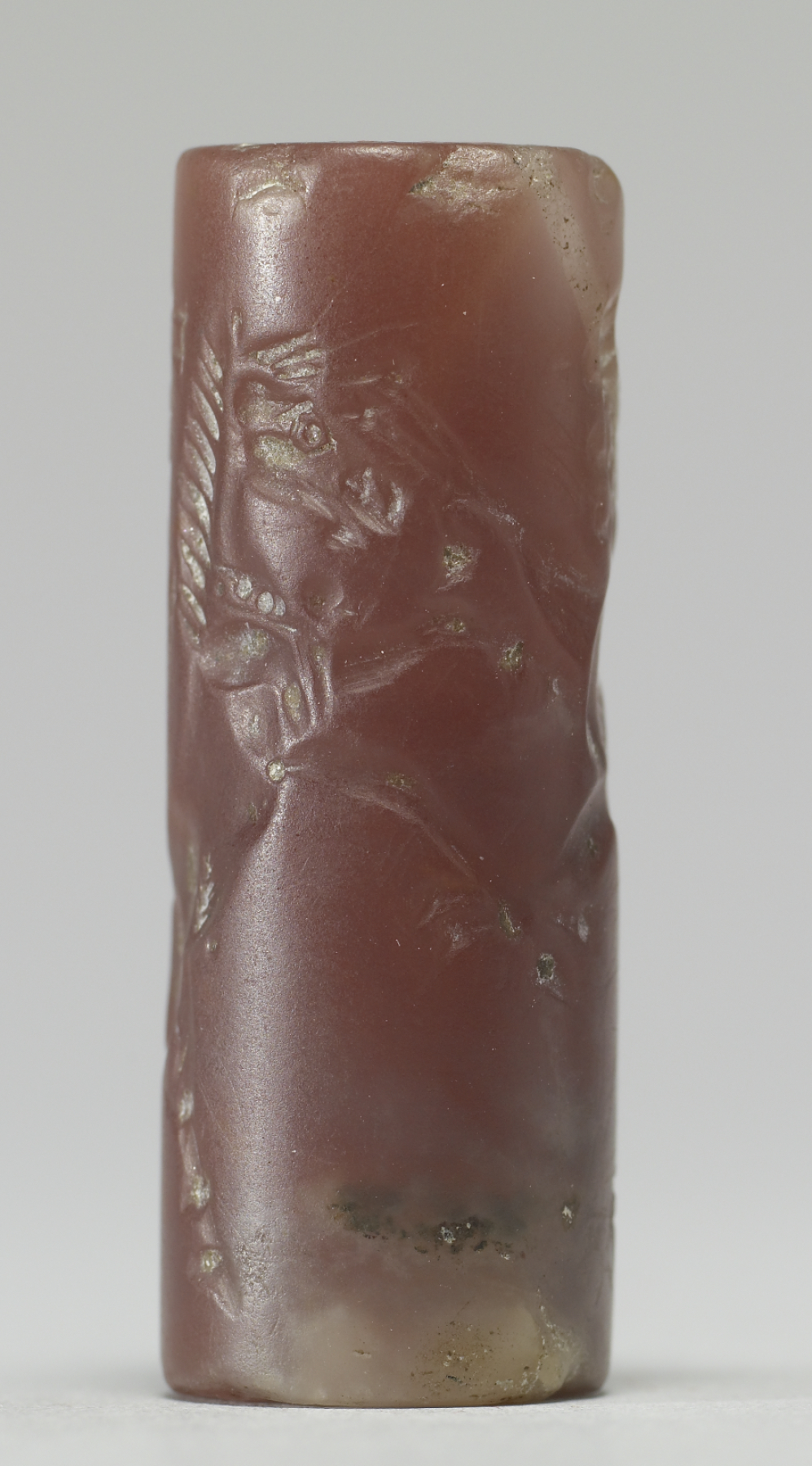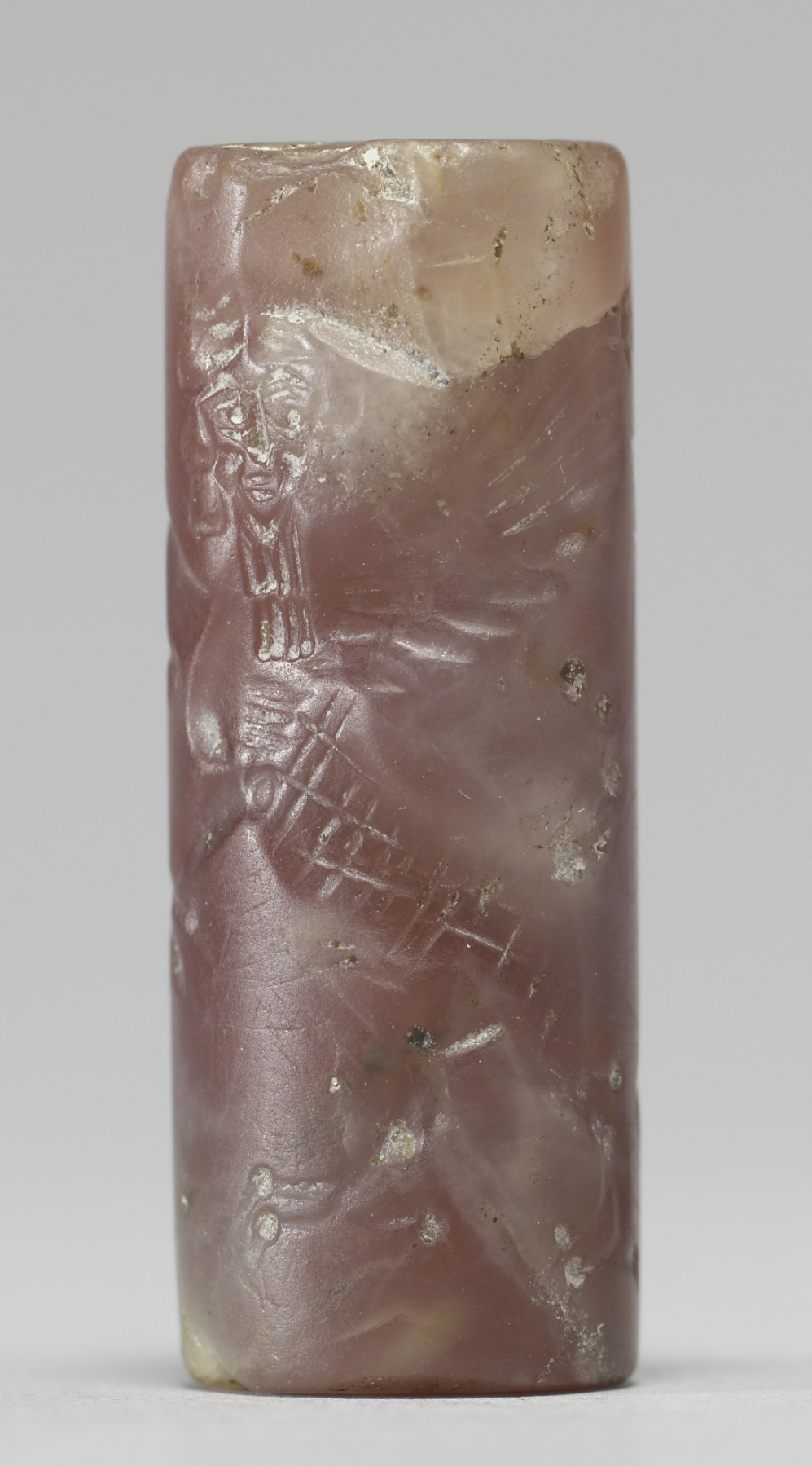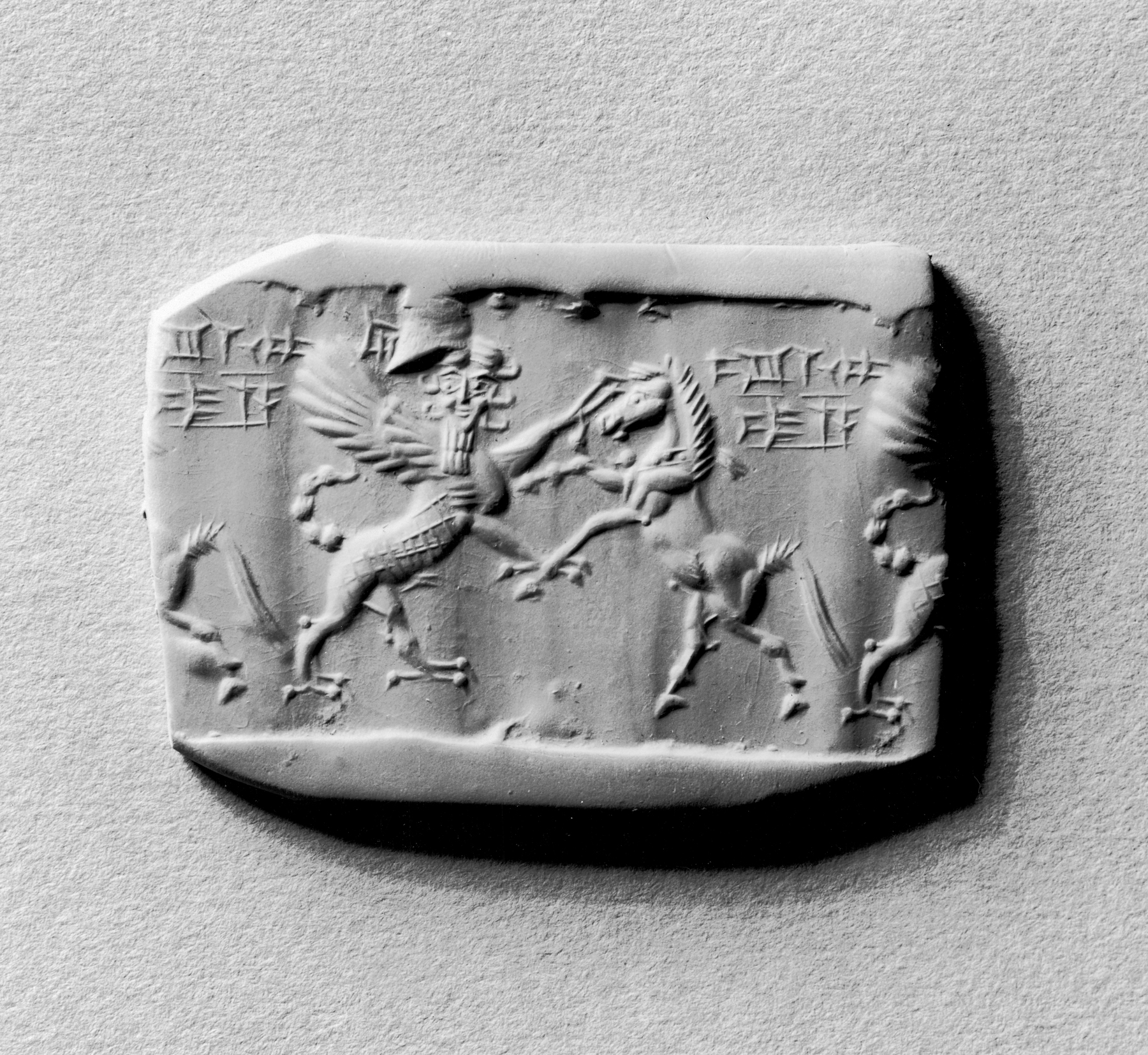Cylinder Seal with Human-Headed Griffin Attacking a Horse
(Ancient Near East )
This seal, depicting a human-headed griffin attacking a horse, has the detailed modeling of musculature characteristic of Middle Assyrian period art. The use of an empty background highlights the drama of the contest and marks a turning point in Assyrian art later expressed on a large scale in carved palace reliefs. The cuneiform inscription records the owner's name: "seal of Silliya."
Cylinder seals are cylindrical objects carved in reverse (intaglio) in order to leave raised impressions when rolled into clay. Seals were generally used to mark ownership, and they could act as official identifiers, like a signature, for individuals and institutions. A seal’s owner rolled impressions in wet clay to secure property such as baskets, letters, jars, and even rooms and buildings. This clay sealing prevented tampering because it had to be broken in order to access a safeguarded item. Cylinder seals were often made of durable material, usually stone, and most were drilled lengthwise so they could be strung and worn. A seal’s material and the images inscribed on the seal itself could be protective. The artistry and design might be appreciated and considered decorative as well. Cylinder seals were produced in the Near East beginning in the fourth millennium BCE and date to every period through the end of the first millennium BCE.
Inscription
Provenance
Provenance (from the French provenir, 'to come from/forth') is the chronology of the ownership, custody, or location of a historical object. Learn more about provenance at the Walters.
Henry Walters, Baltimore, [date and mode of acquisition unknown]; Walters Art Museum, 1931, by bequest.
Conservation
| Date | Description | Narrative |
|---|---|---|
| 6/4/1968 | Treatment | other |
Geographies
Mesopotamia (Place of Origin)
Measurements
H: 1 9/16 x Diam: 9/16 in. (3.9 x 1.5 cm)
Credit Line
Acquired by Henry Walters
Location in Museum
Accession Number
In libraries, galleries, museums, and archives, an accession number is a unique identifier assigned to each object in the collection.
In libraries, galleries, museums, and archives, an accession number is a unique identifier assigned to each object in the collection.
42.444


















